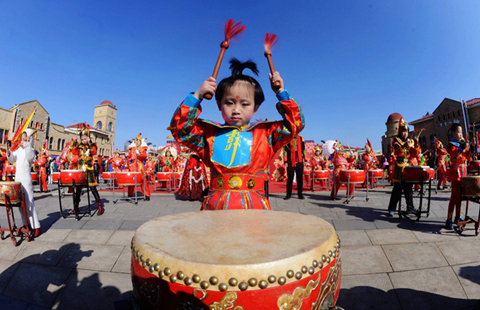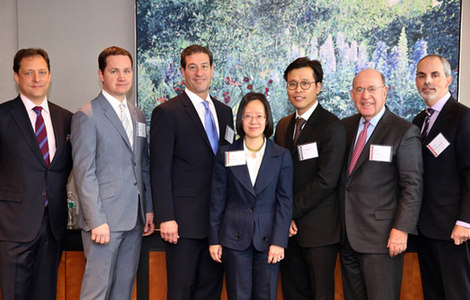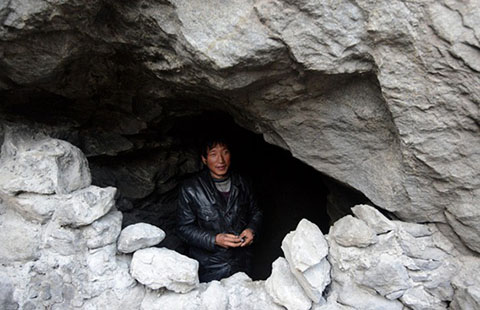China's regional strategy gets nod
Updated: 2015-03-04 11:14
By Hua Shengdun in Washington(China Daily USA)
|
||||||||
The US backs China's engagement and bilateral cooperation in the Asia-Pacific region, said a State Department official on Tuesday.
"We support China being robust in that region. That's where China is," said Catherine Novelli, Under Secretary of State for Economic Growth, Energy and the Environment, in Washington. "At the same time, we have very old ties there, and want to make sure that we are able to have our companies do well there as well."
Novelli said these things were not "mutually exclusive", as the US supported a solid engagement and was also engaging directly with China. "We have our bilateral treaty talks that are actually going very well and progressing," she said.
 |
|
Catherine Novelli, Under Secretary of State for Economic Growth, Energy and the Environment |
Asked about the controversial Chinese "one belt, one road initiative", Novelli said there was not "only one mode of cooperation nor only one area of cooperation".
"We think there are many avenues, countries have many interests, they cooperate with many neighbors on lots of different things," she said.
The "one belt, one road initiative" was brought up by Chinese President Xi Jinping in 2013. It refers to the New Silk Road Economic Belt that links China and Europe through the Central and Western Asia and the 21st Century Maritime Silk Road which connects China with Southeast Asian countries, Africa and Europe.
During Xi's four-country Asia trip last September, he proposed to "closely knit China's competitive industries with the geographical features and the development needs of Tajikistan, the Maldives, Sri Lanka and India" by the initiative, according to Xinhua News Agency.
Muhammad Azizul Haque, the Bangladeshi ambassador to China, told China Daily last year that the China's initiative embodies its vision for itself and the rest of the world for the 21st Century.
"The initiative symbolizes China's vision for global peace and development through establishment of intensive physical and other forms of connectivity, as well as cooperative ties between China and the countries across Eurasia, Africa and beyond," he said.
As the world's largest country of international trade, China's proposal is welcomed by many of its neighboring countries, Haque said.
Novelli also mentioned China and other countries' potential engagement in the Trans-Pacific Partnership (TPP), saying that the US needed to conclude the negotiations first before moving on with any other countries becoming part of it. And newcomers will have to meet high standards to meet the "stringent" agreement.
With negotiations beginning in 2005, TPP is now an Asia-Pacific region regulatory and investment treaty between 12 countries: Australia, Brunei, Canada, Chile, Japan, Malaysia, Mexico, New Zealand, Peru, Singapore, the United States, and Vietnam.
Jagdish Bhagwati, a professor of law and economics at Columbia University and a senior fellow at the Council on Foreign Relations, said the absence of China on the agenda was the US political response to China's new aggressiveness and it was therefore built in a spirit of confrontation and containment, not cooperation.
"The TPP is being sold in the US to a compliant media and unsuspecting public as evidence of American leadership on trade. But the opposite is true," said Bhagwati, a leading free trade advocate.
Zhu Guangyao, China's vice-finance minister, said last year that the TPP would be "incomplete" without China's participation.
"We want to see the Chinese economy more integrated with the global system," Zhu said last October.
It was widely regarded as a turning point in China's attitude towards the TPP, a switch from suspecting the treaty as being part of a US containment strategy against China to showing an interest in a regional free trade agreement.
Sheng Yang in Washington contributed to this story.

 New sports cars debut Geneva motor show
New sports cars debut Geneva motor show
 People celebrate upcoming Lantern Festival across China
People celebrate upcoming Lantern Festival across China
 Chinese investors take bite of Big Apple
Chinese investors take bite of Big Apple
 Intl Hair Freezing Contest winners announced
Intl Hair Freezing Contest winners announced
 Volcano Villarrica erupts in southern Chile
Volcano Villarrica erupts in southern Chile
 All dressed up
All dressed up
 Caveman saves money for family
Caveman saves money for family
 Buddhist monks break bricks in kung fu
Buddhist monks break bricks in kung fu
Most Viewed
Editor's Picks

|

|

|

|

|

|
Today's Top News
China refutes US concern over security
China could pass US in electric-car market: expert
China's defense budget expected to rise about 10%
Netanyahu assails Iran-nuclear talks
US firms to lower China stakes in '15
US agents raids 'maternity hotels'
Homeless man shot dead by police
China passes US at movie box office
US Weekly

|

|







